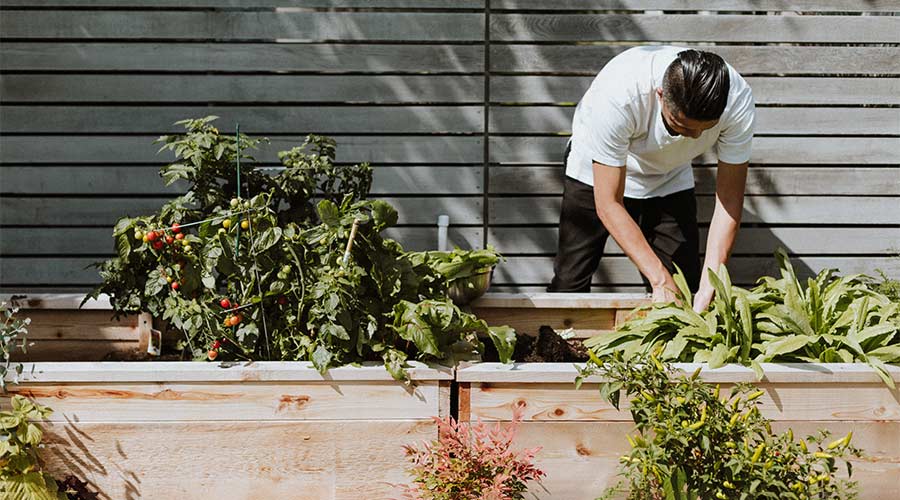
Filling the raised bed is done in layers. The bottom layer (20 centimeters) is made of brushwood. On top of that, you put a layer of lawn clippings or turned-over sod of about the same thickness. Next, add a layer of compost about 15 centimeters thick to the bed. Finally, fill the raised bed with 15 centimeters of raised bed soil (crops) or potting soil (ornamentals). This leaves some space at the top of an 80-centimeter-high bed, which prevents irrigation water from running off the edges. The ideal time to fill the raised bed is in autumn. Not only does this time of year produce garden waste that you can use as filler, but the bed will also have plenty of time to settle over the winter.
After the first harvest, you’ll notice that the soil has sunk ten to twenty inches. This is perfectly normal, as the lowest layers sink down due to the rotting process. Simply fill the bed with raised soil. If you have refilled three times, you will have to refill the raised bed because the substructure has rotted. You can also check whether the wire mesh is still serving its purpose.
As with humans, not all vegetables get along with each other. If so-called bad neighbors meet, either both vegetables will suffer or one will deprive the other of all the nutrients needed for lush growth. With good neighbors, there is no nutrient competition, so both vegetables thrive. Examples of combinations that get along are:
Have you always wanted to learn how to create your own raised bed? Find…
Barbecuing with friends and/or family is as much a part of summer as the…
Relaxing in the garden or immersing yourself in a good book allows you to…